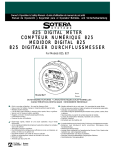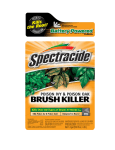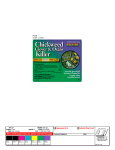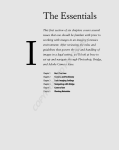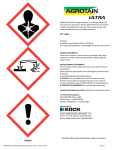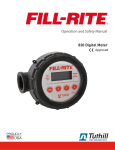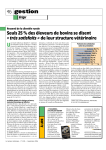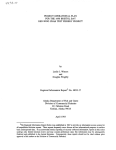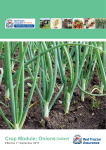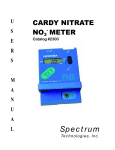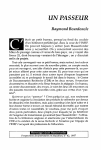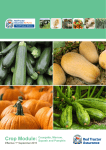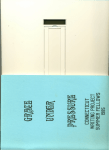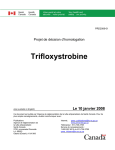Download board members - Western New York Crop Management Association
Transcript
Did you know that 40 is the number of years that lambsquarter seeds can survive in the ground Main Office: 5242 Curtis Road, Warsaw NY 14569 Randolph Office: 91 Jamestown Street, Randolph NY 14772 March 11, 2013 2012 Annual Meeting Highlights The annual meeting on February 28th was more than a chance to look at the finances of the cooperative from 2012; it provided a chance to look at ideas to improve member farms in 2013 and beyond. The meeting was well attended and opened the eyes of growers to new ideas. Tom Kilcer, from Advanced Ag Systems, shared research on winter forage options that can increase the per-acre yield in fields and add high-quality forage to the bunk. His information on triticale has many growers looking for seed to plant this fall. If you missed this discussion or are looking for more information, Tom can be reached at [email protected], or visit his website at http:// www.advancedagsys.com. Dr. Andrew Landers, from Cornell University, entertained the attendees with the do’s and don’ts of spray application. Spray particle size has everything to do with effective coverage and drift potential. Thank you to Tim Wittmeyer and Betty Nichols for serving on the board of directors over the past three years. Welcome to the board: Don Telaak and Shawn Cotter, and congratulations to Ben Atwater who will serve a second term as a director. If you were not able to attend the meeting, or are thinking about implementing some of the practices presented, be sure to talk with your consultant. Discussions should be started now to prepare for rotation options, seed purchase, and nutrient recommendations. BOARD MEMBERS Eric Dziedzic President Donn Branton Vice President Shawn Cotter Sec/Treasurer Ben Atwater Kevin Nedrow John Reynolds Don Telaak Page 2 Page 2 WNYCMA WNYCMA Glyphosate Resistance: Can it Happen Here? By: Tom Frederes In a rapidly shrinking world where people, food, seed and fertilizer move freely and geographic borders matter very little, the potential for movement of seeds and insects are limitless. It’s really not a matter of if, but when. The area of U.S. cropland infested with glyphosate-resistant weeds expanded to 61.2 million acres in 2012, according to a survey conducted by Stratus AgriMarketing. Nearly half of all U.S. farmers interviewed reported that glyphosateresistant weeds were present on their farm in 2012, up from 34% of farmers in 2011. The survey also indicated that the rate at which glyphosate-resistant weeds are spreading is gaining momentum, increasing 25% in 2011 and 51% in 2012. Top 3 Countries: Resistant Weed Sites of Action: #3 Canada #2 Australia-62 #1 United States-142 How Does Resistance Occur? The exact reason that a species becomes resistant is not always known. The herbicides/insecticides themselves do not directly cause the genetic change that allows for the resistance. The resistant biotype is present in low numbers in natural populations. When an herbicide is applied, most of the susceptible weeds die, leaving the few resistant weeds to survive, mature, and produce seed. If the same herbicide/insecticide continues to be applied and the resistant weeds/pests reproduce, the percentage of the population that is resistant will increase. Here are some helpful hints from the University of Minnesota. Rotate herbicides (sites of action). Do not make more than two consecutive applications of herbicides with the same site of action to the same field unless other effective control practices are also included in the management system. Two consecutive applications could be single annual applications for two years, or two split applications in one year. Apply herbicides in tank-mixed, prepackaged, or sequential mixtures that include multiple sites of action. Both herbicides, however, must have substantial activity against potentially resistant weeds for this strategy to be effective. Rotate crops, particularly those with different life cycles (e.g. winter annuals such as winter wheat, perennials such as alfalfa, and summer annuals such as corn or soybeans). At the same time, remember not to use herbicides with the same site of action in these different crops against the same weed unless other effective control practices are also included in the management system. Scout fields regularly and identify weeds present. Respond quickly to changes in weed populations to restrict spread of weeds that may have been selected for resistance. Don’t forget to e-mail us [email protected] then visit our website at www.wnycma.com to download the new Record Keeping Software. FOLLOW US ON TWITTER @ WNYCMA AND FACEBOOK @WNY-CropManagement Page 3 A Trip to the Crop Input Superstore by: Tom Frederes Be it sitting in the car or being the guilty party, most of us have been victim of the quick shopping trip that has gone horribly awry. We just need milk, bread and eggs; I’ll be back in 5 minutes. Thirty minutes later, with two overflowing bags, we exit having spent a whole lot more than we had intended. Do we need everything in those bags? Probably not. But we are human, and that means, given enough time, we can rationalize most anything. It’s not like that gallon of ice cream is going to go to waste and sure we didn’t need 1000 sandwich bags, but it was buy 9 boxes get 1 free. A few dollars here and a few dollars there and now that $15 shopping trip cost us $40. Many farmers are fond of saying that if they gained a pound or two of milk every time a salesman or consultant said they would, their cows would average 200 lbs per day. It’s gotten to be the same way on the field crops side; a bushel here, seven more there. It’s a wonder the average corn yield isn’t 300 bushel per acre followed by 150 bushel beans. (Although with some of the yield monitor reports I hear, 300 might be a tad low…) Increase in genetic yield potential has most certainly occurred at a rapid pace the last 20 years with the advent of GMO crops. There seems to have been an explosion of silver bullet products to match these technology advances. Many of these products come with dubious research, if any at all, to WNYCMA back them up. The extra $5 an acre for product XYZ to improve your Glyphosate activity or that $10 foliar micro pack to add with the fungicide application can really add up. It’s easy to let that $15 acre trip across the field become a $40 one if you aren’t careful, and you may not have any more in your bin/grocery bag after you’ve made the trip to the store. I’m not suggesting that all of these products don’t work or that they are not economical, but how do you know? The best way to find out what is worth the extra cost is to implement some on-farm trials. This is relatively simple if you have yield monitors, but can also be accomplished through the use of stationary or portable scales. (The CMA does have a set of portable scales that could be utilized by members.) It’s easy to rationalize that extra buck or two or twenty an acre for a splash of this and a pinch of that. But at the end of the year, when you have left the store and tallied your crop expenses for the year, you may end up feeling like you were sold a bag of goods! Do your homework and find out what is truly effective. WNYCMA STAFF CROP CONSULTANTS David DeGolyer, CCA, CCP Dan Steward, CCA, CCP Chad Stoeckl, CCA, CCP David Shearing, CCA Eric Nixon, CCA Tom Frederes, CCA Nick Youngers, CCA Henry Kelsey, CCA Nate Herendeen, CCA CROP TECHS Mike Youngers Andy Marusarz Ben Welch Jason Post Josh Harvey Bob Scott Dave Wiggers Don Mitzel Julia Olmstead Megan Burley FARMSTEAD PLANNERS Jim Booth, CCA, CCP Rhonda Lindquist Greg Tessmann Jim Seiler Jared Norton Lori Whittington OPERATIONS MANAGER Deirdre DeGolyer COMPUTER/ IT MANAGER Avery DeGolyer OFFICE SUPPORT Jenn Elliott Kathy Morton Page 4 WNYCMA WNYCMA Page 4 What I Learned at Growmark’s Agronomy Conference By Julia Olmstead, Crop Technician In January I attended a Growmark sponsored Agronomy Conference at RIT Inn & Conference Center in Rochester. I found two of the presentations particularly interesting: The Seven Wonders of High Yield Corn Production with Dr. Fred Below and Progressive Growers Pushing the Yield Envelope with Missy Bauer. Dr. Below, Crop Physiology Professor at the University of Illinois, gave us what he deems the seven most important factors pertaining to corn yield and their contribution value. The prerequisites for these seven factors are drainage, soil pH, fertility, and weed control. He placed special emphasis on banding fertilizer, saying that it ensured that there were no plants “left behind”. Besides the seven wonders, Dr. Below described his “high tech package” which has produced 300-bushel corn in his studies. The high tech package consisted of 100 lbs P2O5 as MESZ which supplies phosphorus, sulfur and zinc, 100 pounds extra N at sidedress, a triple stack hybrid with soil insecticide at planting, a final stand of 45,000 plants/acre in 30 inch rows, and a Strobilurin fungicide such as Headline at flowering. You can watch informational videos about these “seven wonders” with Dr. Below online at www.7wondersofcorn.com. Missy Bauer is an independent crop consultant with B&M Consulting out of Coldwater, Michigan as well as the Farm Journal’s Associate Field Agronomist. One topic she spoke about was stand establishment and ear count. She explained how the microenvironment around the seed at planting has a large impact on whether your cornfield is a “picket fence stand” with uniform ears. She emphasized making sure that everything on your planter is working properly to reduce the number of skips or doubles and to prevent variations in planting depth. Gauge wheels, closing wheels and down pressure are among the most important things to check. Planting speed is also of importance, especially when the seedbed is rough. Extensive residue from previous years may also cause the seed to become “pinched” preventing the seed from having contact with the surrounding soil. Missy also explained how changes in soil density are one of the main reasons corn plants do not develop adequate downward root systems. A sudden change in soil density causes roots to grow outward at an angle less than the normal 45 degrees. These density layers prevent the corn from reaching the moisture that they need in hot summer months. Missy suggested a system approach using more than one tool. She promoted vertical tillage implements (ex. zone builder) followed by a vertical harrow as a secondary operation. You want to create a uniform shatter in the top 4 to 6 inches of the soil so that you don’t leave behind “columns” in between the shanks. Proper depth, shank spacing and the simple tool design are all important factors to create a seedbed without density changes. Digging a soil pit may help identify if you have density layers in your soil Page 5 WNYCMA WNYCMA Page 5 How Should You Be Putting the Nitrogen on Your Grass? 2. Air Flow the urea: This option is not available in every area, but will definitely result in a better distribution of fertilizer. It should be noted that even this technology can’t fully overcome uneven size distribution. By Dan Steward The investment in nitrogen for grass is not a small one. Because of the high price of fertilizer and the increased value of all forages, many farmers are taking a closer look at how they are applying this input. 3. Utilize UAN applied through Stream Bars: This technology has become popular among Does this picture look familiar? Uneven wheat growers over the last number of years. The traditional method of applying nitrogen on nitrogen fertilizer applications with a spinner UAN broadcast sprayed with flat fans will “burn” grass has relied heavily on urea fertilizer. It has spreader are probably the cause of the streaks vegetation it comes in contact with and has high always been a challenge to apply urea taken in this field. Photo from article by Peter potential for volatilization. Stream Bars, on the uniformly with a spinner spreader. Part of this is other hand, use an orifice to “stream” large Scharf, University of Missouri. due its light weight and part of this has to do droplets down to the ground. These larger with the very nature of spinner spreaders. (I droplets tend to bounce off foliage and don’t went online and downloaded a user manual for How can you apply your nitrogen more burn the crop. Application should be uniform accurately? There are basically three a fertilizer spreader. The manual listed 13 across the entire width of the boom. alternatives: factors that affected the spread pattern!) Now we have the additional challenge of the size consistency of urea. Natural gas is about ¾ of the cost of producing nitrogen fertilizer, so it’s considerably cheaper to make nitrogen fertilizer in places where gas prices are 10-20% of the prices in the U.S., then ship the fertilizer here. By the time it gets to the field where it will be spread, imported urea has been through more augers than domestic urea. This handling can break down individual granules or prills into smaller particles. (see below) 1. Do a better job with your spinner broadcast spreader: Many farms own their own dry fertilizer spreader; probably just as many or more use the local fertilizer store’s. Has that spreader been calibrated? Is it being operated correctly? Do you even think about it before you start the PTO and engage the drive wheel to start spreading the first load? That five ton load of urea you are about to put out there is worth $2,750 at $550 per ton, plus your application cost. You probably don’t have to give your fertilizer spreader as much attention as you do your corn planter, but at least throw a little TLC its way. Of course there are some disadvantages with this system. Although the difference in price hasn’t been as high in the last few years, UAN has historically been more expensive per unit of nitrogen than urea. You also have to be set up to efficiently handle a large volume of liquid. To apply 80 units of N/acre requires about 25 gallons. A 500 gallon sprayer will cover 20 acres at this rate. On the other hand a five ton spreader of urea can cover 57 acres at 175 lbs per. Finally, there is the added cost of the stream bars. 20” stream bars are listed on Needham’s Ag Product web page at $21.00 apiece plus postage and handling. To outfit a 45’ boom sprayer the cost would be just under $600.00. After someone does or doesn’t calibrate your fertilizer spreader, you could also try narrowing your distance between passes. Most spreaders are designed to apply fertilizer over a 50’ spread pattern. But this is a very general guideline. Experience usually shows that urea Screen separated urea taken from fertilizer doesn’t fly that far. Reducing the rate per acre spreader. Image courtesy of Needham Ag and the distance between passes may improve fertilizer distribution, or at least make the pattern Broken granules will not travel as far as intact of uneveness less obvious. With a crop like granules when applied with a spinner spreader. grass, we are generally not going to be hurt in Above: Stream Bars. Image courtesy of When poor quality fertilizer with a lot of broken the overapplication strips because we are granules is applied using a spinner spreader, a usually not putting on maximum nitrogen rates. Needham Ag majority of the small particles fall near the path (Wheat on the other hand, unlike corn or grass, of the spreader. This results in a high N rate has the potential to lodge where nitrogen is near the path of the spreader and a low N rate overapplied.) We are going to lose more (in lost midway between passes. yield) on the underapplied areas of grass fields. Page 6 WNYCMA Cont. from Page 5 What is the better way to go? Comparison of different nitrogen fertilizer materials for grass: Cost 80 lbs Nitrogen Dry Fertilizer Program 200 lbs/acre 39.8-0-0-6 = 80-0-0-12 A dry fertilizer blend of 75% Urea and 25% of Ammonium Sulfate (A.S.) gives a fertilizer analysis of 39.8% N and 6% sulfur. To help protect the urea from volatilization, it will be necessary to treat it with Agrotain. Using ball park prices from local retailers, the cost of this blend is approximately $550/ton. (Urea @ $525, Ammonium Sulfate @ $415/ton, Agrotain @ $50.00/treated ton urea) Cost: $55.00/acre (ATS) gives a fertilizer analysis 28% N and 2.6% sulfur. About ½ of the nitrogen in UAN is in the urea form, which is subject to volatilization. The ATS has some antivolatilization properties, albeit not nearly as effective as Agrotain. Additionally, the stream bar’s large droplets have the effect of reducing the surface area of the liquid, also reducing volatilization. Using ball park prices from local retailers, the cost of this blend is approximately $420/ton. Cost: $57.75/acre Agronomic Effects: Nitrogen Availability Plants take up the majority of their nitrogen in the nitrate form. However, they will also take up nitrogen in the Ammonium form. Urea is converted to nitrate within a few weeks of application. A slight advantage of UAN over 80 lbs Nitrogen Liquid Fertilizer Program urea is that half of the nitrogen is immediately 275 lbs/acre (25 gallons) 28-0-0-2.6 available to the plant. Will this result in higher A liquid fertilizer blend of 90% Urea-Ammonium yields? It depends on the weather. If the Nitrate (UAN) and 10% Ammonium-Thiosulfate moisture and nitrogen is there, the grass will likely respond quicker to UAN. Sulfur Both of these fertilizer programs have some sulfur in them. Sulfur from acid rain has declined in the northeast. (It should be noted that we are in an area that receives a higher amount of sulfur annually compared to the rest of the country.) Do we need more? 10 tons of grass haylage harvested per acre in a year will theoretically remove 15 lbs of sulfur. This does not mean that you should plan on putting 15 lbs of sulfur per acre to replace it, but that grass will pull down the levels unless it is replaced. Manure is a good source of sulfur. Unfortunately, there haven’t been many sulfuron-grass yield trials. Adding that sulfur to your fertilizer will make your grass a darker shade of green and the envy of your neighbors. And it might even add to your yield and protein. In my opinion, adding sulfur to the blend is probably a wise thing to do on fields that don’t receive manure. Up-Coming Meeting In response to requests from area growers for pesticide credit opportunities, WNY Crop Management has teamed up with Chautauqua County Cornell Cooperative Extension to present 2013 Field Crop Update. This meeting on Wednesday, March 27th from 11 AM to 3 PM at the Frank Bratt Agricultural Center will address pests, pesticide regulations, corn and soybean disease, cover crops and herbicide resistance. 3 DEC pesticide credits are available for all attendees. We hope to see many of you there. The cost is $15 per person for Chautauqua County CCE members, $25 for non-members. Call 664-9502 x 209 to register by Wednesday, March 20th






